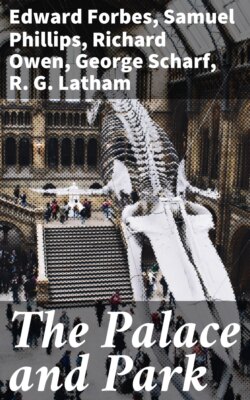Читать книгу The Palace and Park - Edward Winslow Forbes - Страница 7
На сайте Литреса книга снята с продажи.
THE ALHAMBRA COURT.[9]
ОглавлениеThe architectural sequence is now interrupted. We have arrived at one of those offshoots from a parent stem which flourished for a time, and then entirely disappeared: leaving examples of their art which either compel our wonder by the extraordinary novelty of the details, as in the case of Nineveh, or, as in the court now before us, excite our admiration to the highest pitch, by the splendour and richness of the decorations. The Saracenic or Moresque architecture sprang from the Byzantine, the common parent of all subsequent styles, and the legitimate successor to the Roman system. We shall immediately have occasion to speak more particularly of the parent root when we cross the Nave and enter the Byzantine Court. Of the Moorish architecture which branched out from it, it will be sufficient to say here, that the solid external structure was of plain, simple masonry; whilst the inside was literally covered, from end to end, with rich arabesque work in coloured stucco, and adorned with mosaic pavements, marble fountains, and sweet-smelling flowers.
[9] See “Handbook to the Alhambra Court,” by Owen Jones.
Entrance to Alhambra Court.
Ground Plan of the Alhambra Court.
The vast fortress-palace of the Alhambra,[10] of a portion of which this court is a reproduction, was built about the middle of the thirteenth century. It rises on a hill above the city of Granada (in the south of Spain), the capital of the Moorish kingdom of that name, which, for two hundred and fifty years, withstood the repeated attacks of the Christians, and was not finally reduced until 1492, by Ferdinand and Isabella. The Alhambra, under Moorish rule, was the scene of the luxurious pleasures of the monarch, and the stage upon which many fearful crimes were enacted. Within its brilliant courts, the king fell by the hand of the aspiring chief, who, in his turn, was cut down by an equally ambitious rival. Few spots can boast a more intimate association with the romantic than the Alhambra, until the Christians ejected the Moors from their splendid home, and the palace of the unbeliever became a Christian fortress.
